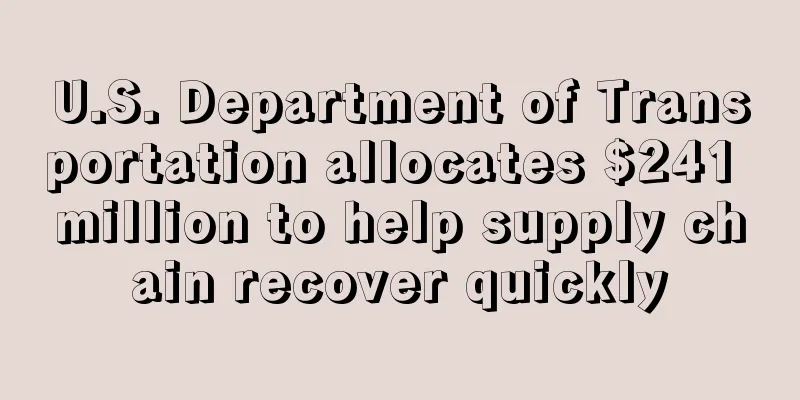U.S. Department of Transportation allocates $241 million to help supply chain recover quickly

|
In order to ease port congestion and solve the supply chain crisis, the United States can try every possible means. According to foreign media reports on the 29th, U.S. Transportation Secretary Pete Buttigieg announced that more than $241 million in discretionary funding will be provided for 25 projects through the Port Infrastructure Development Program (PIDP) of the Maritime Administration (MARAD) to help improve facilities at ports in 19 states and one region. The funded projects include coastal seaports, Great Lakes ports and inland ports.
California received funding for two projects, including Powering the Future in Oakland and U.S. Green Gateway Phase I in Long Beach. The Oakland project will build a new on-site fuel cell facility and a solar array with electrical storage, and establish a direct connection between the port substation and the local power company's biomass-fueled generator.
The funding is part of President Biden’s Harris Ports Initiative, which aims to strengthen supply chains to meet demand from the rapid economic recovery over the past year and address inflationary pressures.
Buttigieg said that U.S. maritime transport plays a critical role in the supply chain. Funding programs for ports will help support American jobs, operate efficiently and resiliently, and deliver goods faster to the American people.
The PIDP program is now in its third year and has allocated approximately US$492 million to 32 projects of regional and national economic significance in the first two years . This program plays an important role in supporting the construction and development of port facilities and ensuring cargo transportation needs.
In addition to financial allocations, the United States has previously adopted a series of policy measures to ease port congestion, including 24/7 port operations, additional container detention fees, and new port vessel queuing regulations. Although the effect is not obvious, it is still somewhat effective.
Currently, according to Bloomberg, according to a new calculation method, the number of container ships heading to the busiest port in the United States has increased to nearly 100, which also shows that the congestion problem in American ports has not been solved from the root. In addition, the chain problems such as the supply chain crisis caused by the congestion not only affect the local area in the United States, but also cause a lot of damage to cross-border sellers. I hope that the local government's response measures to the current situation of the port will be effective and usher in a smooth cross-border year next year. U.S. Department of Transportation Supply Chain |
<<: Sellers’ products have become free props, buyers: “Everyone does this”
>>: More than a third of Americans spend on loan during the holidays
Recommend
What is Manual Targeting? Manual Targeting Review, Features
Manual Targeting is Amazon’s manual advertising. ...
Walmart may sell its Central American business
Walmart is considering selling its business in Ce...
What is My Yearbook
MyYearBook is the third largest social networking...
What is Facetory? Facetory Review, Features
Facetory , based in California, is an anti-aging ...
TikTok surpasses YouTube for the first time! The average monthly usage time of TikTok users reaches 23.6 hours
Recently, according to data released by research ...
More platform policies tightened, Meikeduo suspended more than 1,300 illegal accounts
More than 1,300 fraudulent accounts registered wi...
What is Hubu RPA? Hubu RPA Review, Features
Hubu RPA is an automation platform specially buil...
What is Shopee? Shopee Review, Features
Shopee Home focuses on Shopee tool development an...
The number of registered users exceeded 38 million, and the number of annual payments of Japan PayPay exceeded 2 billion times
As the novel coronavirus infection spreads and ha...
Another Shenzhen freight forwarder "collapses"! The seller has sued
The freight forwarding industry has been in turmo...
What is Interpark? Interpark Review, Features
Interpark was founded in 1996 and is the first la...
Italy proposes a three-year tax inspection plan to crack down on tax evasion
Recently, the Italian Tax Administration has form...
A surge of 719.6%! South Korean container shipping company HMM's third-quarter profit is released
Since the beginning of this year, repeated outbre...
What is Plugg.to? Plugg.to Review, Features
Plugg.to was born in mid-2015 and is a pioneer in...
The boss showed off the use of AI and then laid off 90% of the employees. Netizens: Your company is hopeless
A few days ago, the CEO of an Indian e-commerce c...









